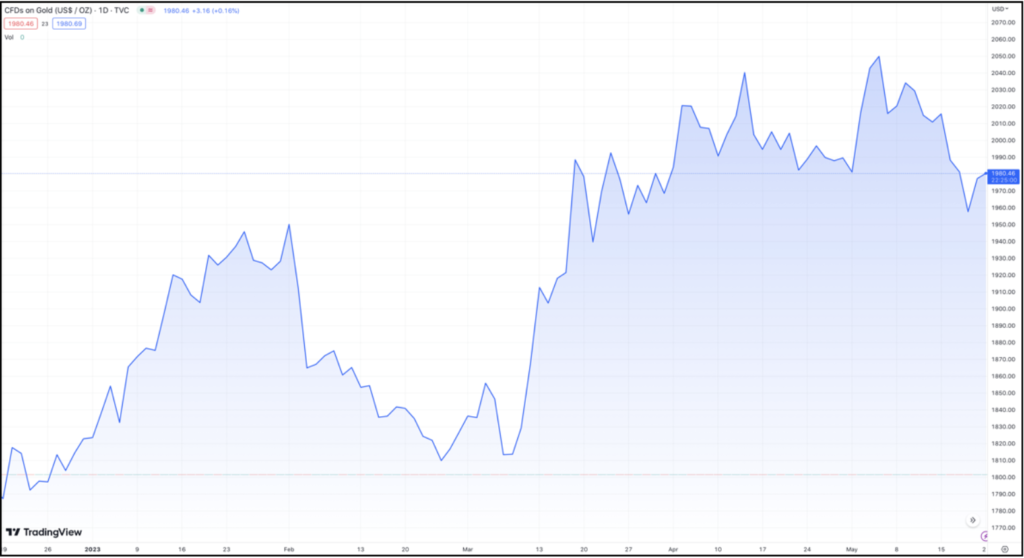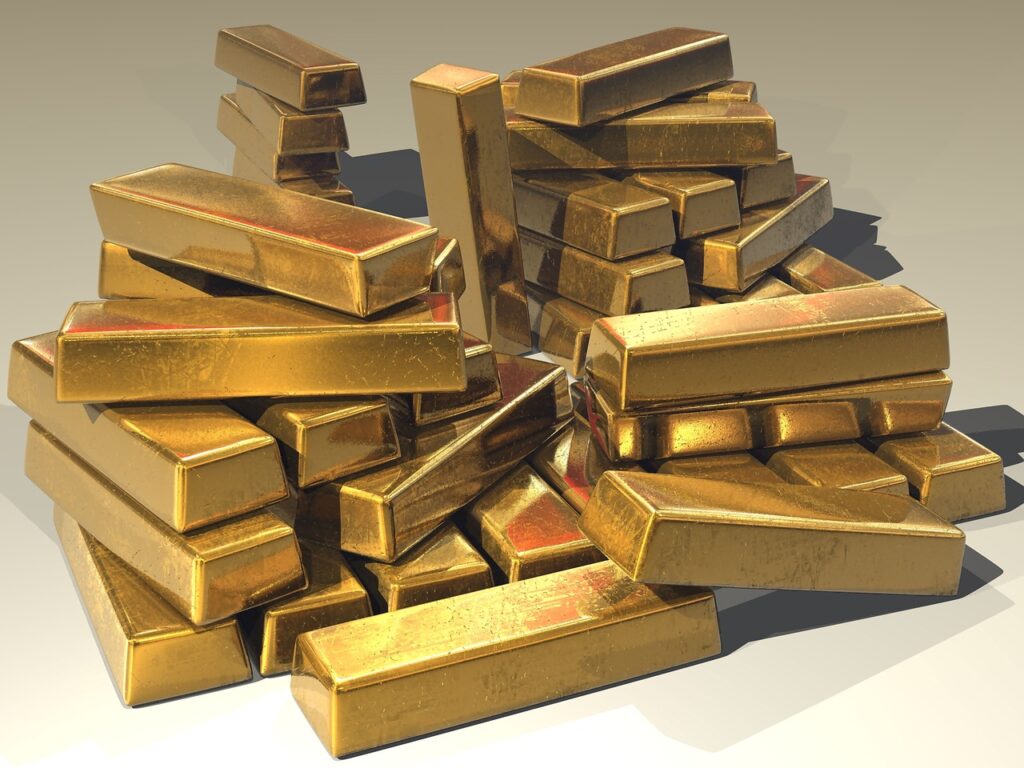The world’s oldest store of value is once again shining brightly.
In financial literacy education, learning how to diversify your investments is a fundamental principle.
The idea is that diversification acts as a hedge. If one class of assets depreciates, another correspondingly appreciates or — at the very least — depreciates less, thereby offsetting potential losses.
It’s why the famous 70/30 portfolio allocation exists, wherein 70% of your investments are in stocks and the remaining 30% are in more conservative and lower-risk holdings like bonds, CDs and fixed income.
And throughout the history of humankind, one particular asset has proven to be the ultimate store of value time and time again.
It’s why we all know the name King Midas. Why Ft. Knox sits next to the U.S. Bullion Depository. And why rappers plug it into their grills.
Gold: The Ultimate Hedge
As we discussed in last week’s issue of The 101, the debt ceiling battle is heating up in Congress and the U.S. could run out of cash by June 1. Meanwhile, as we discussed the week prior, the bank crisis continues to roil the financial sector.
In fact, of the S&P 500’s 11 sectors, the financial sector — primarily based on banking — is the third-worst performing sector this year, posting a +5% loss so far in 2023.
And when we see drama like this occurring — now and in the past — it’s gold that begins to outperform the market. In fact, during the 2011 debt ceiling showdown, gold hit its then all-time high.
The forecasts this time around look similar. The price of gold is again sitting near its all-time high, and according to Investing.com, gold’s mid- and longer-term moving averages and technical indicators make it a “Strong Buy.”

Six-month price chart of gold/oz.
And the reason gold is such a strong buy right now is because of its historical resilience to economic turmoil. When the markets perform poorly or are stuck in a range (as they’ve been since last year), precious metals routinely prove their worth as risk-off assets.
How You Can Take Advantage
If you own a pan, pickaxe and shovel, you can go prospecting. Or you could volunteer at a local nursing home and ask who no longer needs their gold caps now that they’ve transitioned to a puréed food diet.
There are ways to purchase physical gold, too, including coins and bars. But then you run the risk of becoming the target of a Hollywood-inspired heist plot.
An easier way to add gold as a hedge against the debt ceiling fallout would be to find an exchange-traded fund (ETF) leveraged to the precious metal.
There’s no shortage of them, and they’re all performing well over the past 2.5 months. In fact, the following three are all up around 9% since their year-to-date lows in early March:
- The SPDR Gold Trust (GLD)
- The iShares Gold Trust (IAU)
- The SPDR Gold MiniShares Trust (GLDM)
But today, we’d like to focus on the one that’s produced a +20% gain since hitting its year-to-date low on March 9 and can likely run higher as the debt ceiling battle — and ongoing bank failures — continue to plague the markets.
The VanEck Gold Miners ETF (GDX)
This ETF holds a basket of — you guessed it — gold miner stocks. Its top two holdings are the two largest gold miners in the world, Newmont (NEM) and Barrick Gold (GOLD), with allocations of 9.55% and 8.71%, respectively.
Could you just invest in either or both of those companies? Sure. After conducting your own due diligence, the decision is yours to make.
But the benefit of investing in ETFs is twofold:
- It produces broader sector or industry exposure through a fund comprised of numerous companies operating within that space.
- And it reduces your risk exposure because your investment is spread among those numerous companies, and not tied up in just one or two companies.

Six-month price chart of the GDX.
Earlier this month, the GDX was trading around its year-to-date high, which it hit in mid-April. It recently pulled back, which is natural after climbing 26% and challenging its year-to-date high, but it found support around $32 and reversed on Friday.
Though we’d prefer the issue be resolved — and for America to avoid a government shutdown and potential default on its debt — this makes for a good buying opportunity. Especially with the increasing likelihood that the standoff in Congress is going to get worse before it gets better.
And for you dividend-lovers, the GDX pays a modest yield of 1.4% per quarter, which at current prices equates to 48 cents per share.
Like most ETFs, there’s an expense ratio — essentially the management fee. The GDX’s is 0.51%, higher than the average ETF’s expense ratio of 0.16%, but it’s also offset by its 1.4% dividend yield.
TL;DR
Gold is historically a safe-haven asset that acts as a hedge during times of inflation, socio-political unrest, banking crises and debt ceiling impasses. There are a handful of ways you can position yourself to protect your investments, including ETFs like the VanEck Gold Miners ETF.

